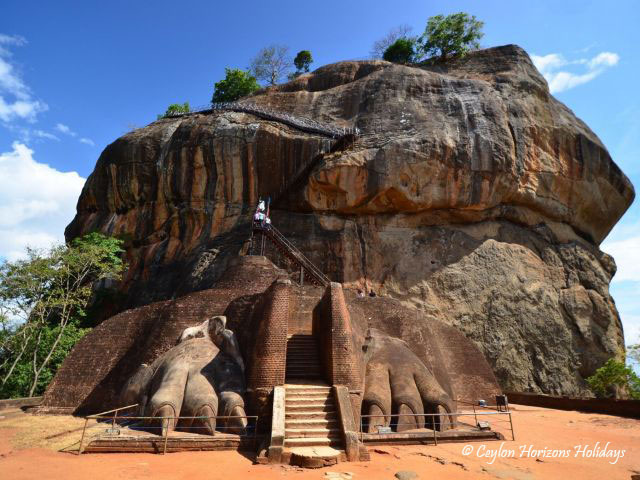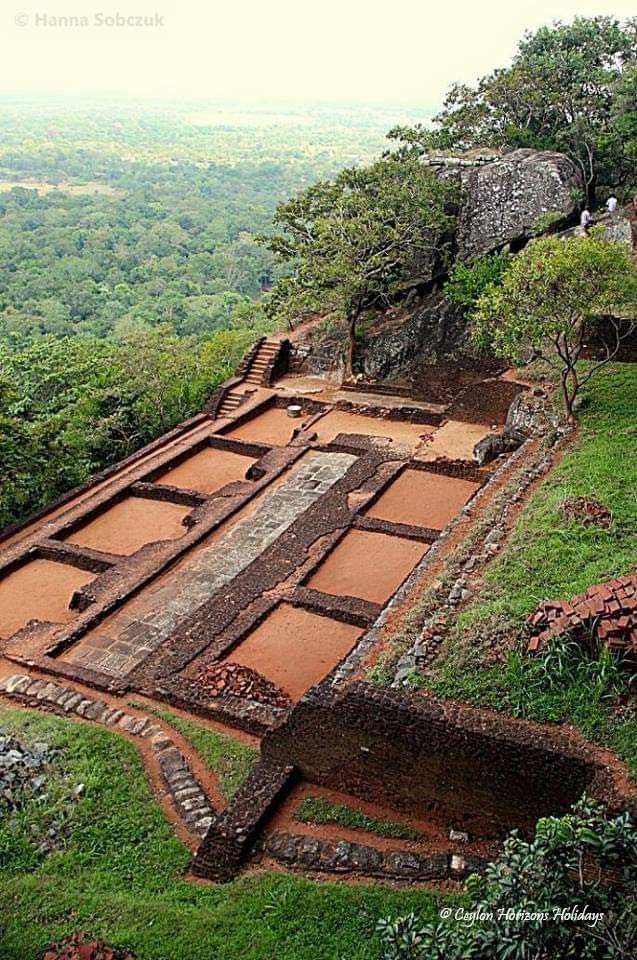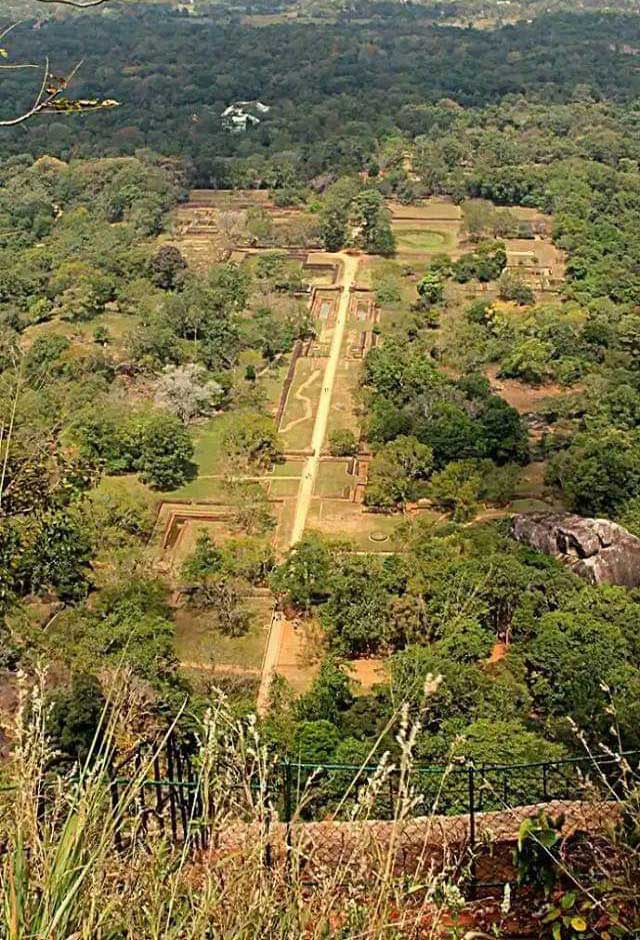Sigiriya
Sigiriya is a unique combination of ancient Sinhalese Urban planning, Architecture, Engineering, Hydraulic management, Garden designing, Arts and paintings.
Sigiriya,

Sigiriya rock fortress is situated in cultural triangle of the north central part of Sri Lanka. It is one of the major archaeological site which was built in 5th century A.D and world heritage city declared by UNESCO. it is one of the best preserved and most elaborate surviving urban sites in the South Asia from the first millennium A.D. Sigiriya is a unique combination of ancient Sinhalese Urban planning, Architecture, Engineering, Hydraulic management, Garden designing, Arts and paintings. The fortress of Sigiriya is centered on a massive rock with the height of 180 meters and located with 360 meters above mean sea level. History goes back to 17th and 18th centuries. “Ali Gala” in Sigiriya is the major pre historic site which was included to Mesolithic period and the occupation was started nearly 5000 years ago.
The history of Sigiriya can be divided in to 3 parts as Pre Kasyapa Era, Kasyapa Era and Post Kasyapa era. In the 3rd century B.C Sigiriya was a Buddhist monastery complex and there is clear evidence that the many rock shelters and caves in the vicinity were occupied by Buddhist monks and ascetics. Buddhist monastic settlements were established during the 3rd century BCE in the western and northern slopes of the boulder-strewn hills surrounding the Sigiriya rock. Several rock shelters or caves were created during this period. These shelters were made under large boulders, with carved drip ledges around the cave mouths. Rock inscriptions are carved near the drip ledges on many of the shelters, recording the donation of the shelters to the Buddhist monastic order as residences.

Political history of Sigiriya starts in the second half of 5th century A.D with King Kasyapa era (473 – 491 A.D). King Kasyapa shifted his kingdom to Sigiriya from Anuradhapura and give this name Lion Rock “ Sinha Giri”. This period was the golden era of Sigiriya rock fortress since most structures that we can see today were built at that time. After the death of King Kasyapa again Sigiriya was turned back in to Buddhist Monastry.
Sigiriya is recorded as the first inbound tourist destination in Sri Lanka as pilgrimage site from 6th century A.D to 14th century A.D. During the annals of history of Sri Lanka, these great monuments helped survive and revive the Sinhalese Buddhist Civilization threatened by the marauding Dravidian invaders from Southern India since ancient to medieval era. During the colonial era Sigiriya was a military center.
Sigiriya is surrounded by three ramparts and two moats forming a rectangle shape. Besides the inner & outer cities within the ramparts, there is evidence of suburban dwellings outside of the walled area. The complex is three kilometers from East to West & one kilometer from North to South. The gardens of Sigiriya present a consummate combination of imaginative landscaping with unique water garden and fresco paintings. Sigiriya is a combination of human mind & natural world. Brilliant combination of geometric square module & natural topography, it speaks of grand urban planning system. The grand urban planning of the city, among other things, is a wonderful manifestation of ancient Sinhalese concepts of Ecology & United Biology as well.

Royal Pleasure Garden
The royal garden of Sigiriya oldest surviving landscape garden of a city fortress is interred connected each other with Water Garden, Boulder Garden and Terrace Garden encircling to the summit of the rock. Garden complex is one of the major finding from the excavations of the cultural triangle of Sri Lanka. This is one of unique and oldest landscaped gardens complex in the world and some of the most significant features are still functioning and preservation. This garden is built according to an ancient garden form known as “char bagh”, and Sigiriya version of gardening is one of the oldest surviving examples.

Water Garden
The water gardens are the most extensive, intricate and complex feature of the western part of the Sigiriya inner citadel. The archaeological excavations have been found large scale ponds with brilliant combination of geometric square module such as “L” shape rectangle shapes and Octagonal shapes. Both sides are symmetrical and there are many evidences to prove that. First water garden is included “L” shape and rectangle shape large ponds.
The second water garden contains two long, deep pools set on either side of the path. Two shallow, serpentine streams lead to these pools. Fountains made of circular limestone plates are placed here. Underground water conduits supply system watering to these fountains which are still functional, especially during the rainy season. Two large islands are located on either side of the second water garden.
The higher level of water garden consists of an extensive area of terrace and halls. On the left corner of this section is larger octagonal pool and terrace based with boulder rock. This is the starting point of boulder garden and which meets boulder garden and water garden. The steps of pathway starting from the moat to bolder garden and terrace garden have been made by using mica rich quarts with the purpose of glittering in night time.
























-
Recent Posts
Connect to Us
- Error: Please check if you enter Instagram username and Access Token in Theme Setting > Social Profiles
Connect to Us

-
Ceylon Horizons Holidays
We are a family of inbound travel agents in Sri Lanka who strives to craft a lifetime worth of experience with unforgettable memories. At Ceylon Horizons holidays, we take care of your holiday from the beginning of itinerary designing, accommodation planning and booking to scheduling the traveling needs.
Contact Us
Information



